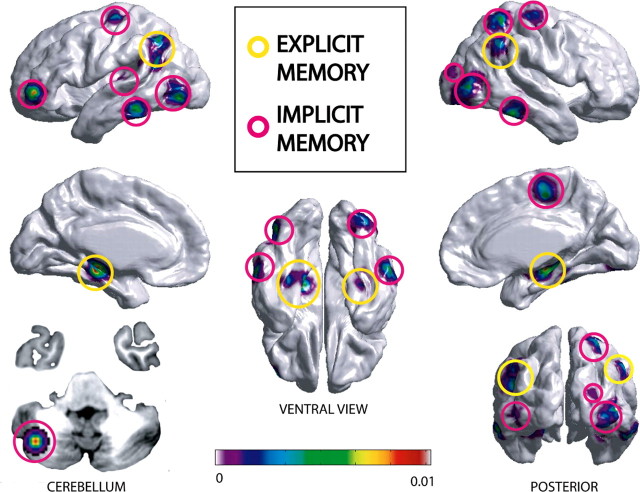Figure 1.
Meta-analysis of voxel-based morphometric studies reporting increased gray matter density after learning in the cortex and cerebellum. Factual knowledge that is recalled by a purposeful effort requires the involvement of the explicit memory system. It is involved in tasks such as spatial navigation (Maguire et al., 2000) and intensive studying (Draganski et al., 2006). Implicit memory refers to intrinsic knowledge about how to perform an action and includes language learning (Mechelli et al., 2005), juggling (Draganski et al., 2004), mirror reading (Ilg et al., 2008), and musical training (Gaser and Schlaug, 2003). The x, y, and z coordinates reported in these studies corresponding to increased density in brain regions were compiled and used to generate an activation likelihood estimate (ALE) map (www.brainmap.org). Coordinates are displayed on an average cortical surface in standard stereotactic space using SurfStat (http://www.math.mcgill.ca/keith/surfstat/). The ALE map reflects the probabilistic likelihood of increased gray matter density occurring within the six studies. Results demonstrate that although structural changes occur in functional areas related to the task, increases also occur in associative areas such as the posterior parietal and temporal cortices. Furthermore, studies examining explicit learning showed an overlap of increased gray matter density in the hippocampal gyrus.

